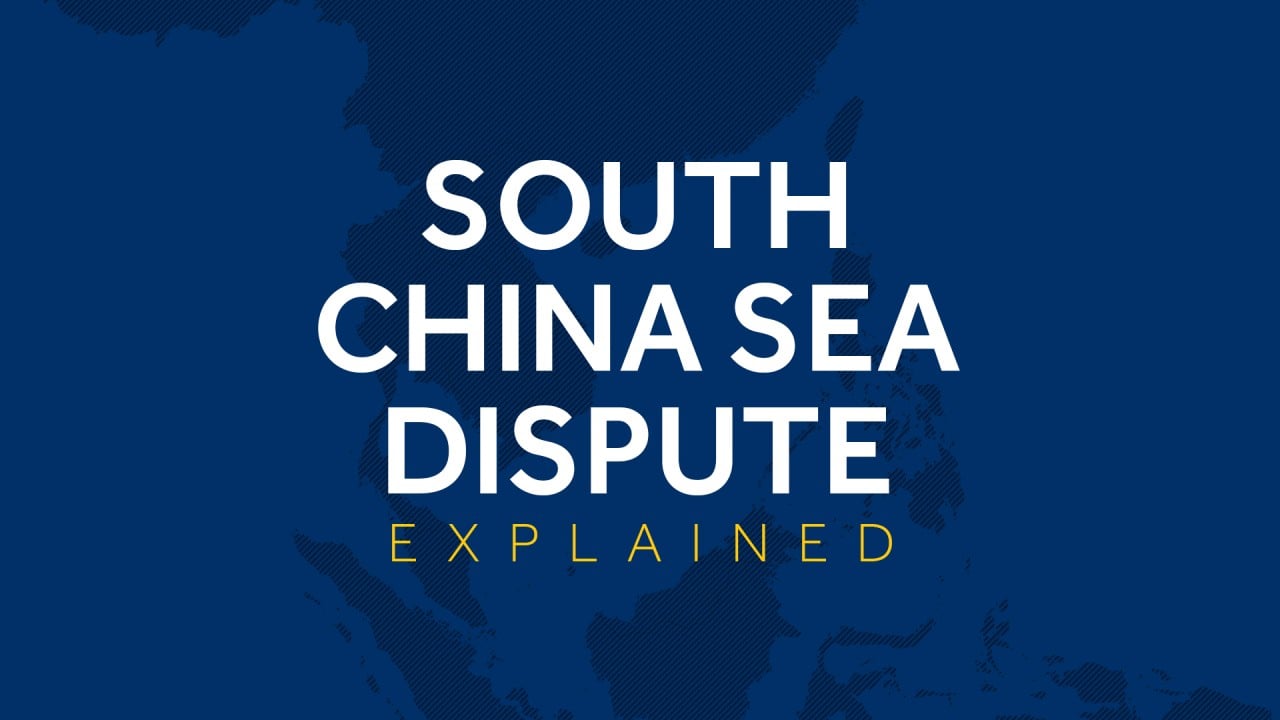
China meets with Asean diplomats to propose resuming South China Sea talks
- Beijing conveys its concerns about the rising risk of conflict over the contested waters
- Discussion follows US Secretary of State Mike Pompeo’s announcement of a harder line concerning China’s ‘unlawful’ claims
Three weeks after US Secretary of State Mike Pompeo announced his country’s new position on the South China Sea, Beijing called diplomats from 10 Southeast Asian countries together for a meeting to convey its worries about the rising risk for conflict over the contested waters.
During the meeting in Beijing in early August, a Chinese official in charge of maritime and boundary affairs expressed Beijing’s concerns for the “high risk” from military activities by “non-regional countries”, phrasing China often uses when discussing the US role in Asia.

02:32
Washington’s hardened position on Beijing’s claims in South China Sea heightens US-China tensions
The Chinese official called on members of the Association of Southeast Asian Nations (Asean) to work with Beijing. The official said they should resume the negotiations for a code of conduct for the South China Sea as soon as possible “to show some progress”, and that China did not want the process to be “hijacked” by countries which are not part of the negotiation, said people familiar with details of the meeting.
“[The official] didn’t say to whom China wanted to show progress, but it was clear that it is the US,” one of the people said.
South China Sea: Asean states set course for Beijing’s red line
Asean diplomats believe the meeting underscores Beijing’s desire to keep its Asian neighbours closer to its side and push Washington out of the picture after the Trump administration signalled a tougher approach against what it calls Beijing’s “unlawful” claims in the South China Sea.
They also said that Beijing has recently shown more willingness to discuss ways to resolve the South China Sea dispute, an issue it has been trying to push aside to instead focus on bilateral economic cooperation.
Indonesia, Singapore steer clear of US-China dispute in Pompeo’s outreach
The Chinese foreign ministry said on Friday that its relevant departments had maintained “normal communication” with Asean missions in China, but would not elaborate.
For more than two decades, China and Asean member nations have discussed a potential code of conduct to manage their territorial disputes in the strategic waterway. An estimated US$3.4 trillion worth of international shipping trade passes through the region every year.

China’s claims to almost all of the South China Sea are sharply contested by Brunei, Malaysia, the Philippines, Vietnam and Taiwan.
China and Asean settled for a non-binding Declaration on the Conduct of Parties in the South China Sea (DOC) in 2002, but it was not formally adopted until 2011. They began negotiations for a supposedly binding code of conduct in 2013, and in 2018 reached agreement on a “Single Draft Negotiating Text” that would be used as basis for the negotiations for the code.
During the Asean-China summit in November 2019, Chinese Premier Li Keqiang announced that the first reading was completed and Beijing proposed a three-year timeline to finish the code by 2021.
Asean members up the ante on South China Sea amid code of conduct talks
But not much progress has been made since then, and the negotiations have further dragged on because of the coronavirus pandemic. Before the outbreak, Asean and China had scheduled a series of meetings for the negotiations, first in Brunei in February, to be followed by others in the Philippines in May, Indonesia in August and China in October.
During a meeting on Thursday with the visiting Indonesian Foreign Minister Retno Marsudi in Hainan, Chinese Foreign Minister Wang Yi said that China is ready to work with Asean countries to ensure an early conclusion for the code of conduct.
Regional experts believe progress on the code has become more important than ever given the increased US pressure and rising tensions between China and Asean countries – the Vanguard Bank stand-off with Vietnam last year, a two-week stand-off with Indonesia in the Natuna waters, and more recently the three-way stand-off with a Malaysian drill ship and Vietnamese vessels.
Vietnam warns Chinese bomber on disputed islands ‘jeopardises peace’
But it remains unclear whether the parties can reach that original deadline of 2021 while significant hurdles remain over the agreement’s geographic scope, enforcement and potential dispute settlement mechanisms. Asean officials said that even to resume face-to-face meetings is difficult while they are still busy dealing with the outbreak.
“It will be very difficult to reach substantial progress – especially after Pompeo’s announcement of the new US position, which has given more bargaining power to the Asean countries,” said Pang Zhongying, dean of the Institute for Ocean Development at the Ocean University of China.
“The negotiations have become more complicated and difficult for China now,” he said.

03:23
The South China Sea dispute explained
Collin Koh, a research fellow at the S Rajaratnam School of International Studies of the Nanyang Technological University in Singapore, said that while the new US position has given a “morale boost” to the Asean claimants, they still must move cautiously on code of conduct talks and try to prevent them from being derailed by the US-China tensions.
He added that the US pressure may potentially push China to agree to make the code a legally binding one, but it remains unclear how the parties could ensure its effectiveness and whether enforcement mechanisms would be established.
“In that document, all parties may agree on common issues such as practical security cooperation in areas such as maritime [search and rescue], environmental protection, et cetera but there are challenges abound concerning proposed provisions that deal with confidence and security-building measures,” said Koh.
“This problem is compounded by the fact that we have 10 Asean parties presenting 10 different sets of proposed items instead of member states having a common set for negotiations with China,” he said.

